11 RTA
- related: step 1 Renal
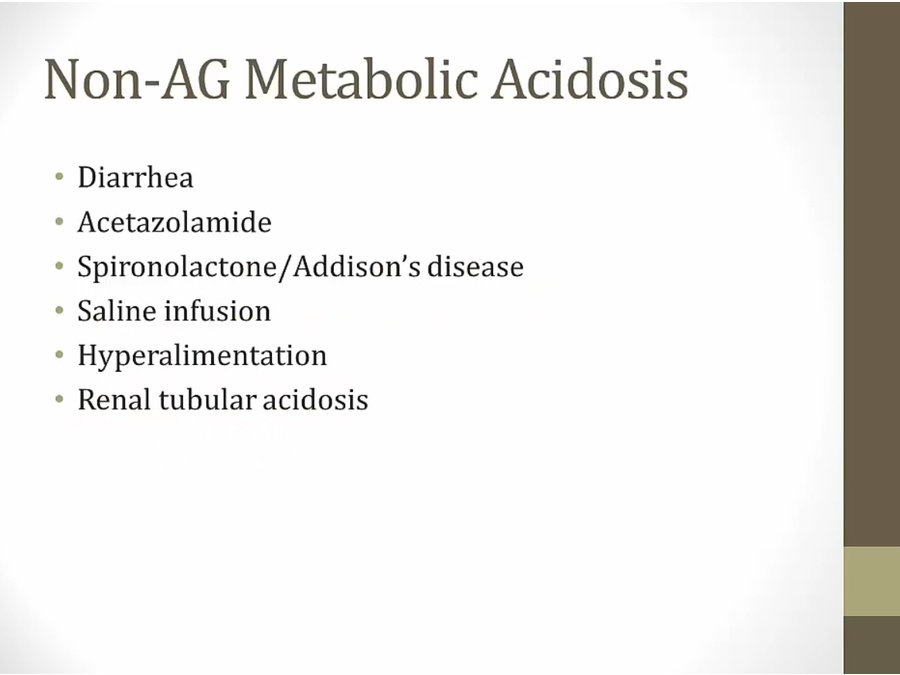
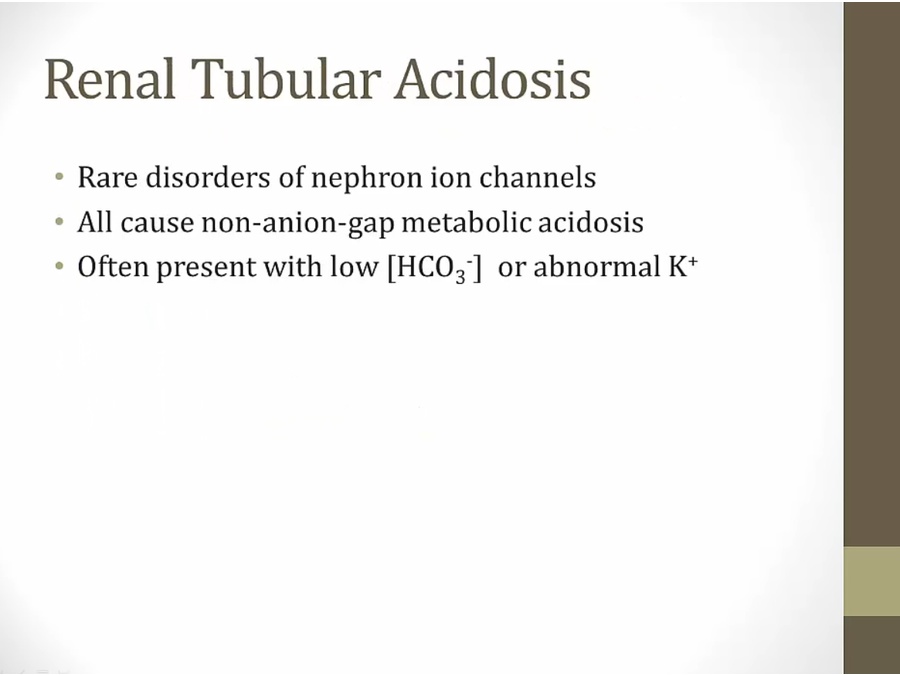
- many times asymptomatic, discovered on routine blood work
- changes bicarb level: non-anion gap
Type 1
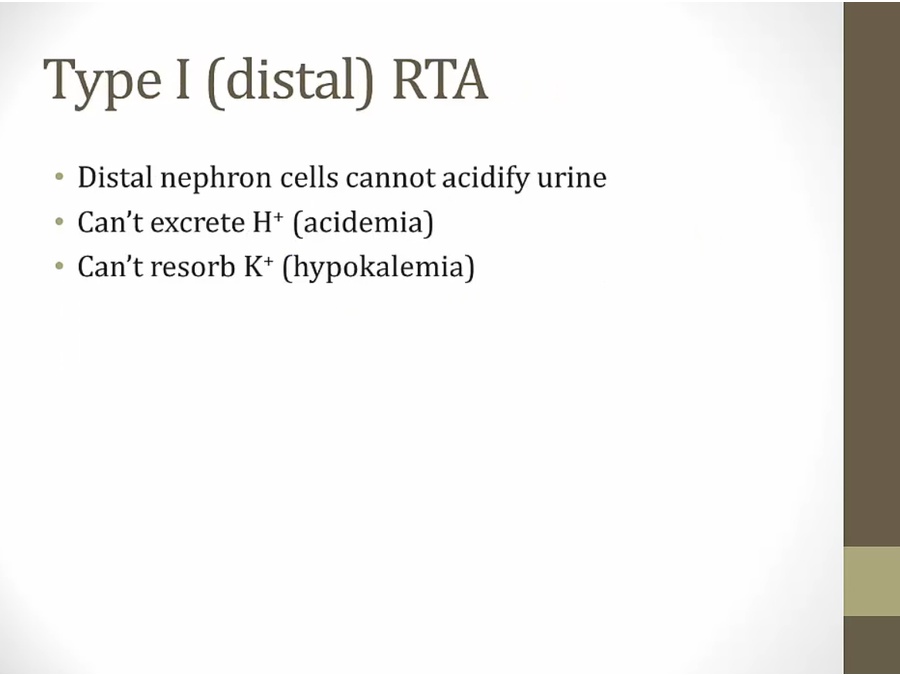
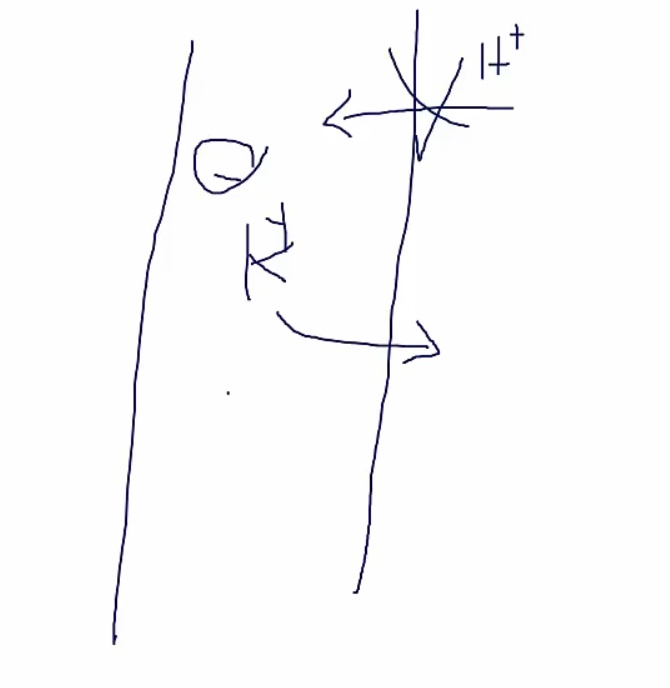
- H channel defect, can’t secrete H
- K held in lumen, no absorption
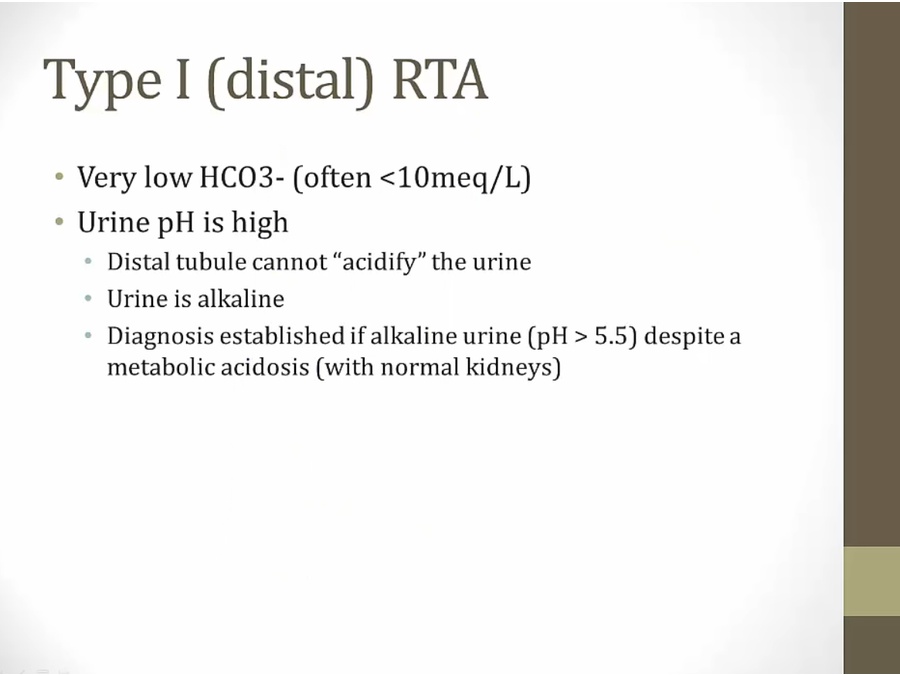
- in metabolic acidosis, urine should be low to excrete H
- if high pH, there’s defect excreting H
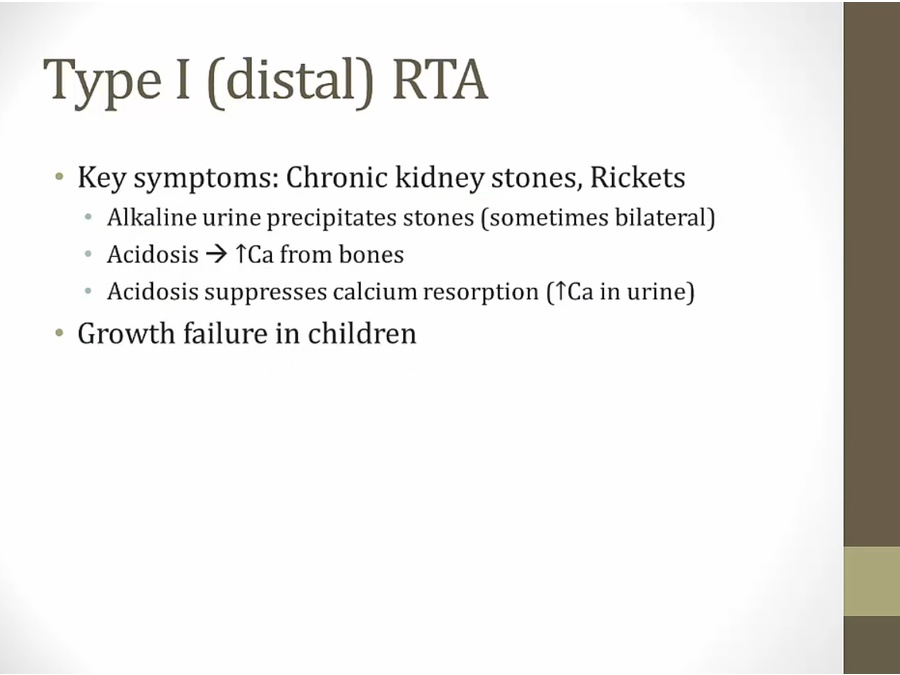
- bilateral stones: think distal RTA
Calcium binds to negative albumin, competing with hydrogen ions
- Alkalosis: less H+ competing, more Ca binding, which decreases free calcium levels.
- Acidosis, increase H+ competing, less Ca binding, resulting in increased free calcium levels
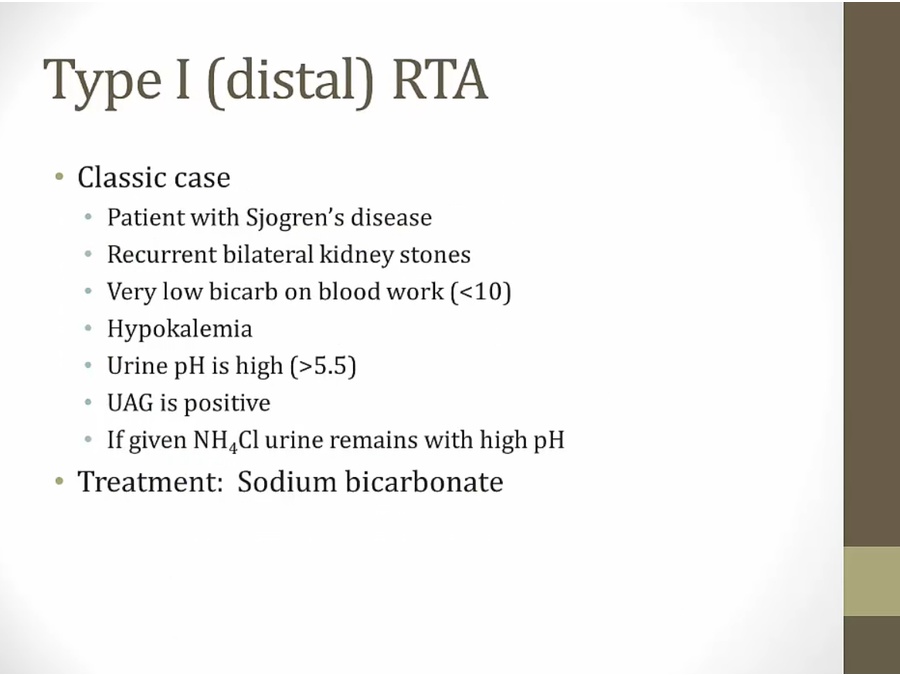
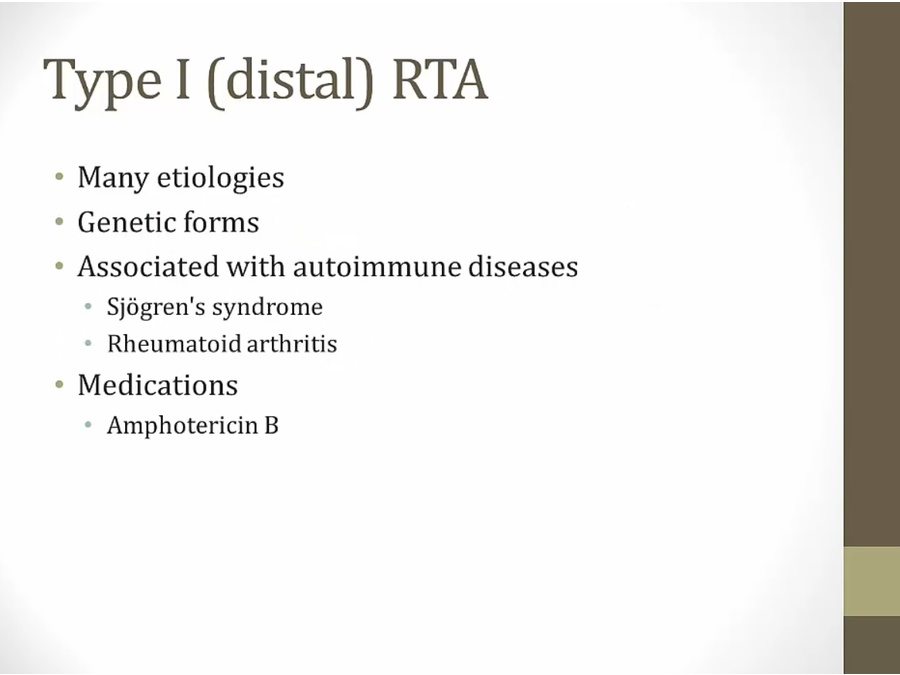
- very very high yield: sjogren or RA
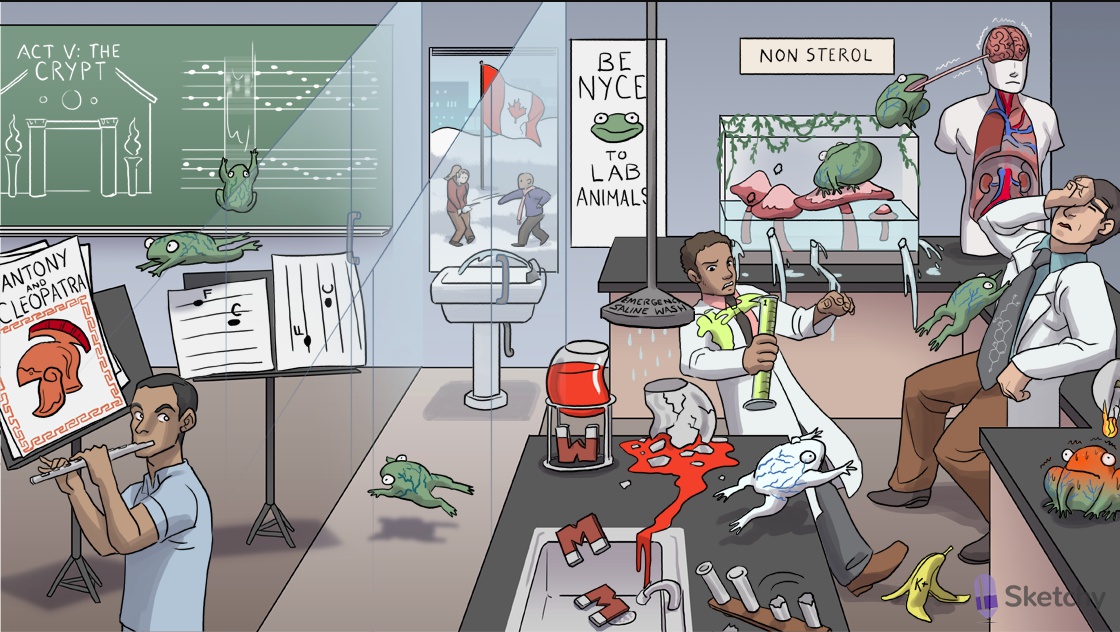
- 1 shaped acid tube: renal tubular acidosis (RTA) type 1 is cumulative toxicity of amphotericin
- Depleted potassium banana peel: RTA type 1 is associated with hypokalemia
Urine Anion Gap
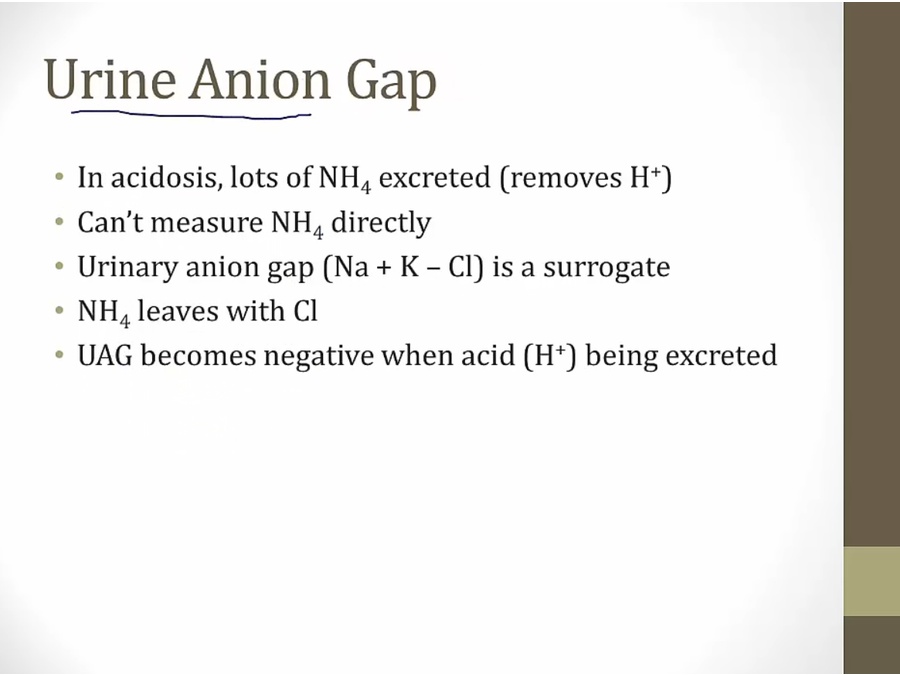
- urinary anion gap equation different from plasma anion gap
- urine Cl goes up, UAG becomes negative
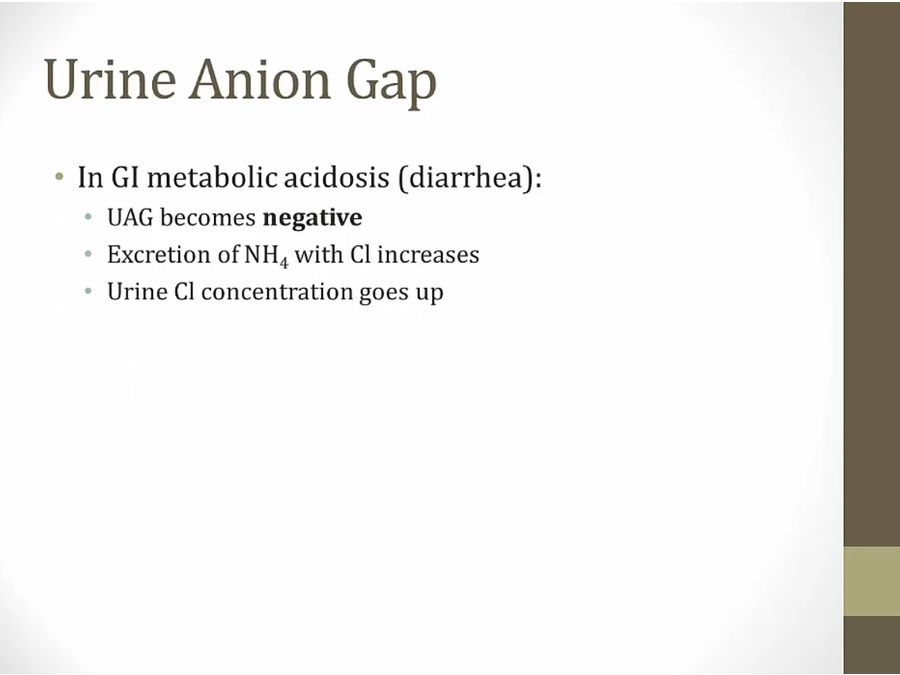
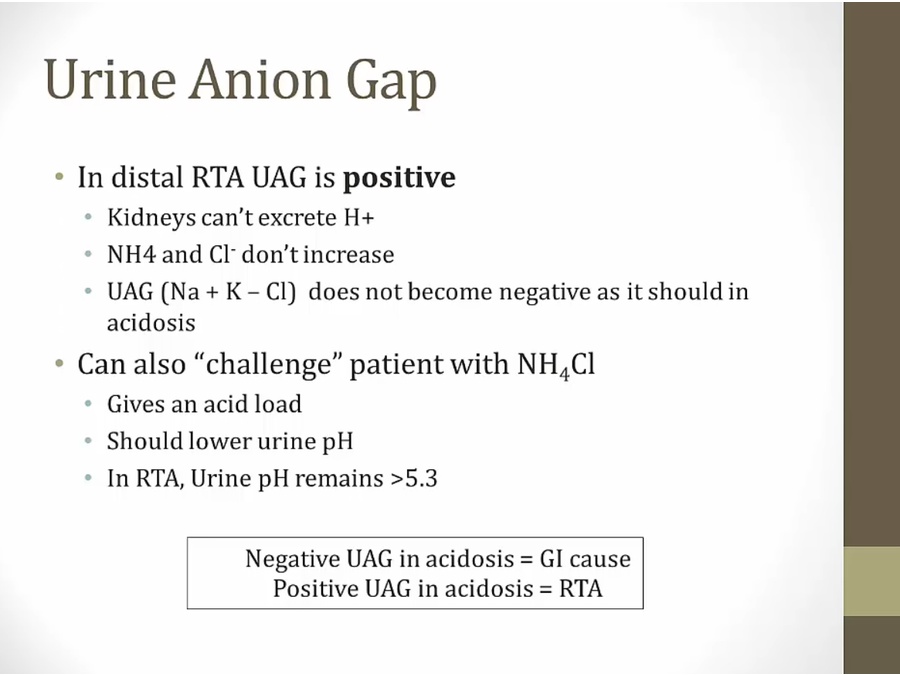
Type 2
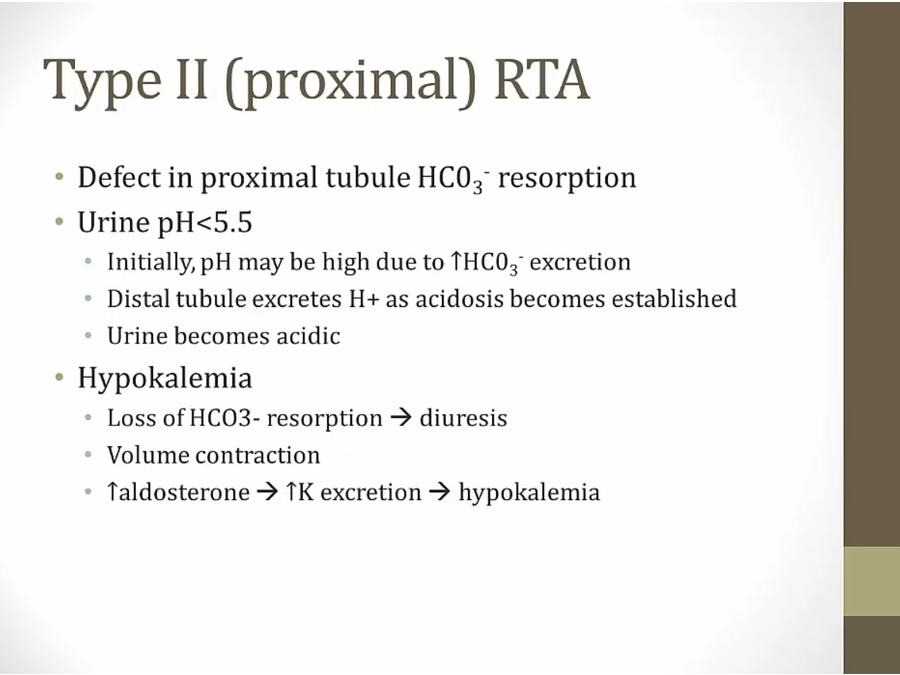
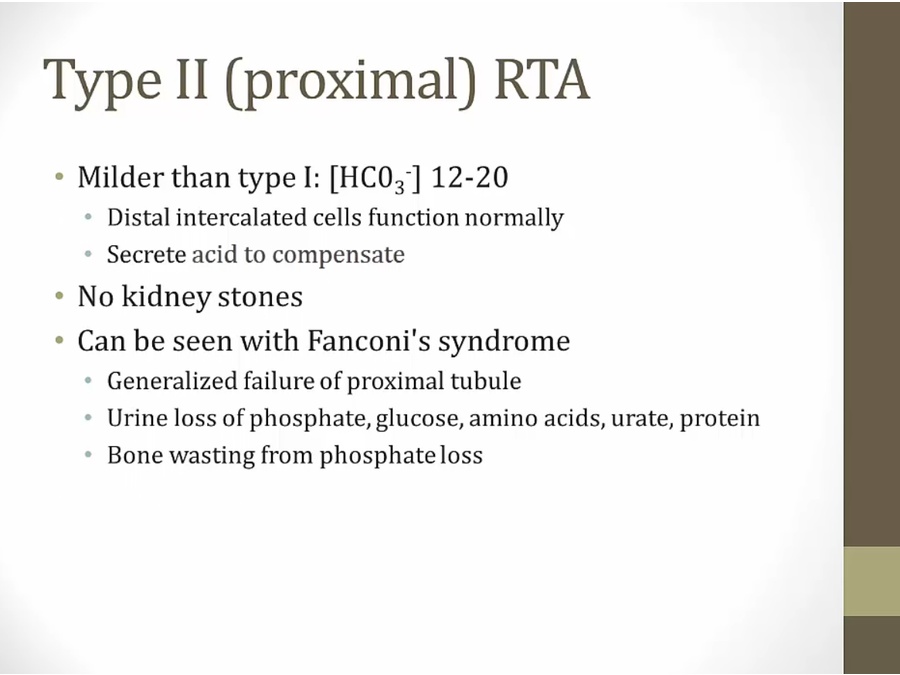

- Fan cone: Fanconi syndrome (type 2 RTA) associated with use of expired tetracyclines
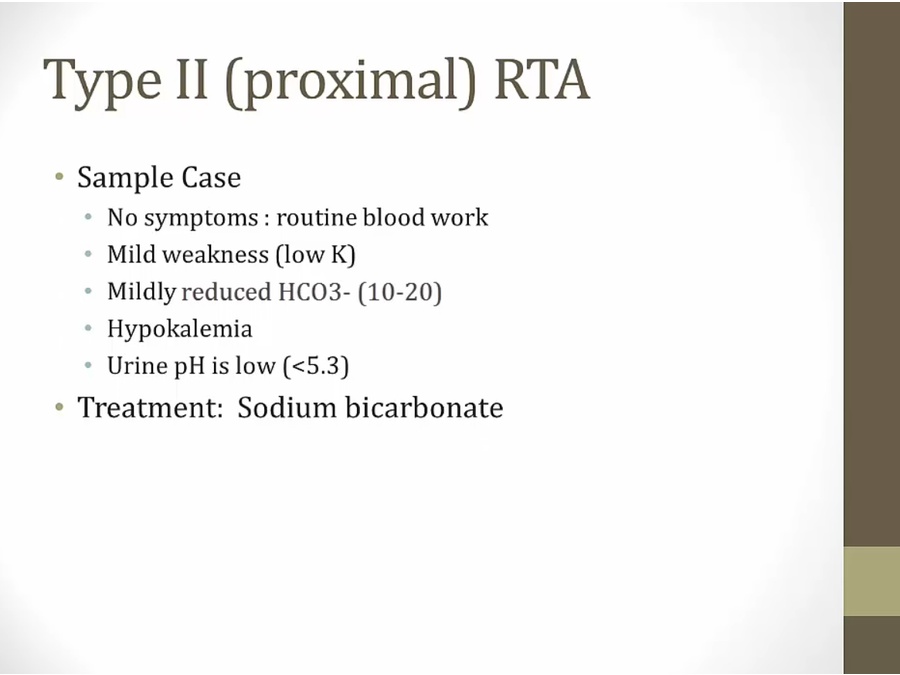
Type 4
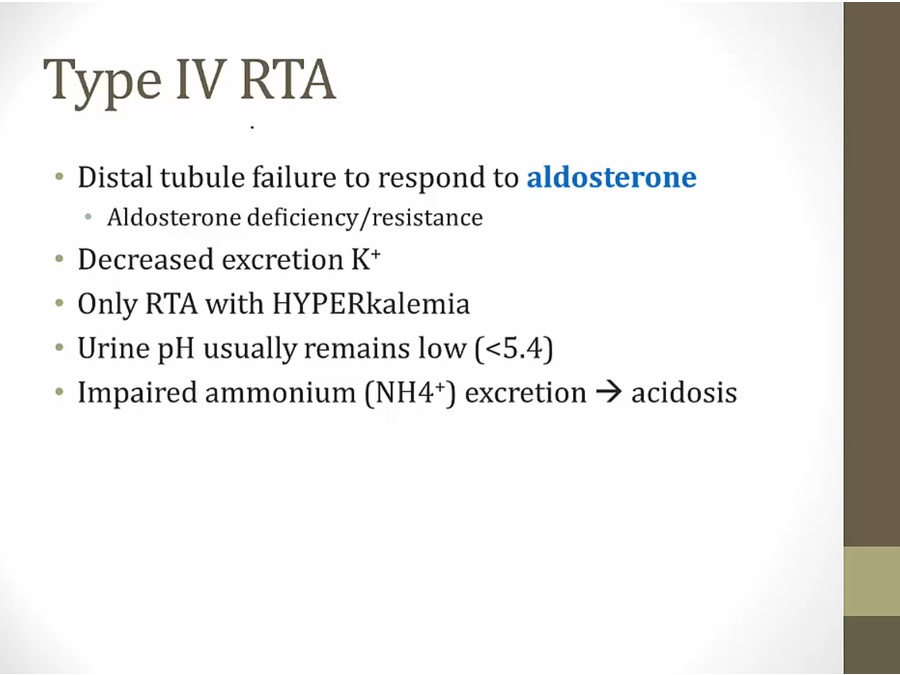
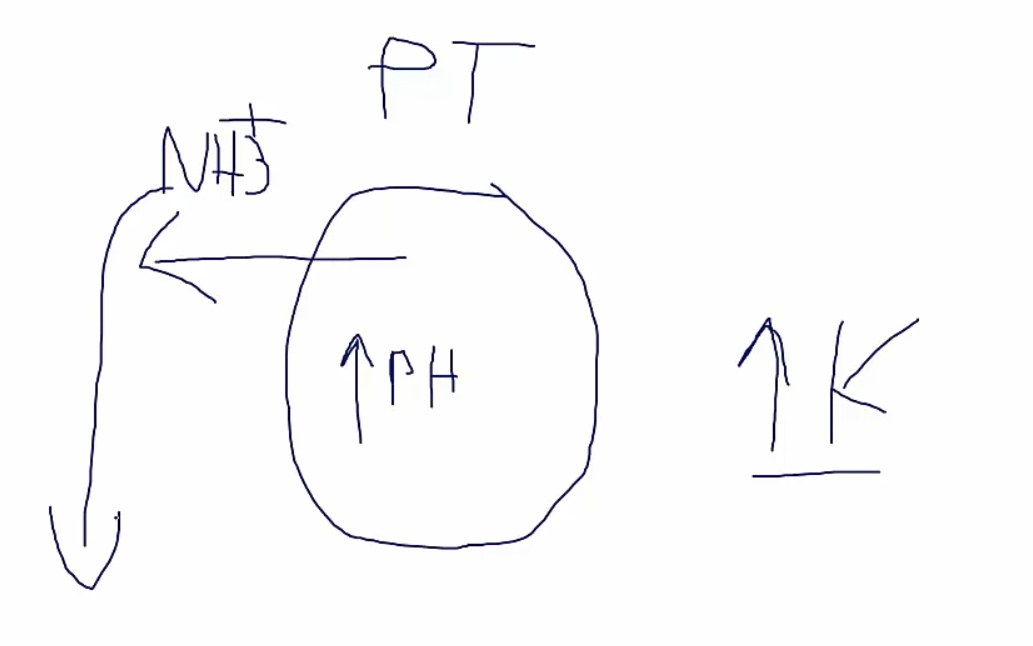
- aldosterone doesn’t work > hyperkalemia
- hyperkalemia > increased K into cell, increased H out of cell> high pH in PCT cells
- high pH > unable to excrete H and NH3
- Inadequate amount of NH3 available for buffering of protons. Even if only a few protons are secreted distally, urinary pH will fall in the absence of buffers.
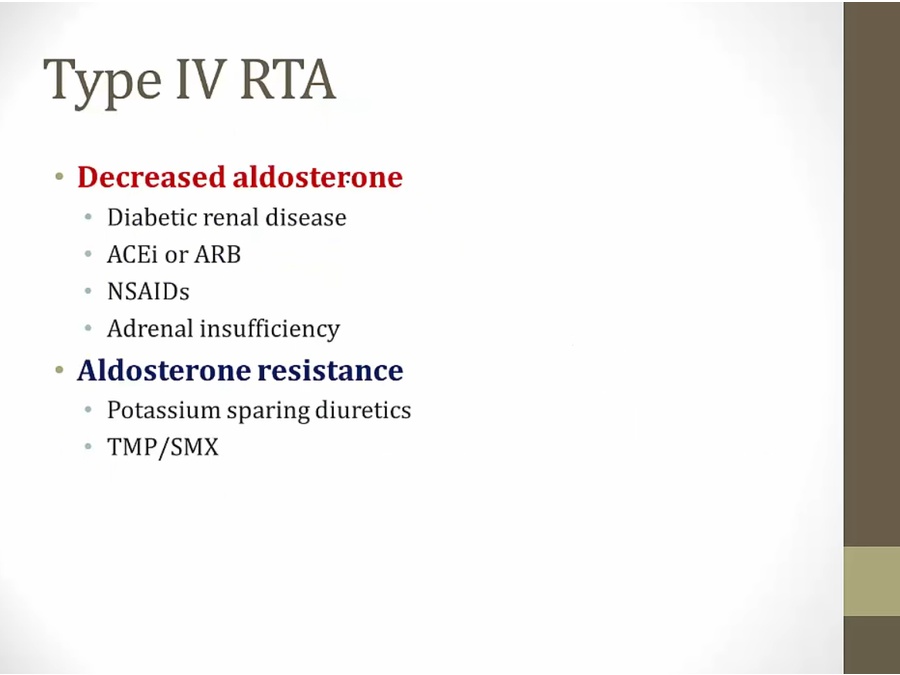
- diabetic renal: less renin production from renal insufficiency
- ace/ARB: less aldosterone
- bactrim: disrupt K excretion
- Hyperkalemic RTA is commonly seen in elderly patients who have poorly controlled diabetes with damage to the juxtaglomerular apparatus, which causes a state of hyporeninemic hypoaldosteronism.
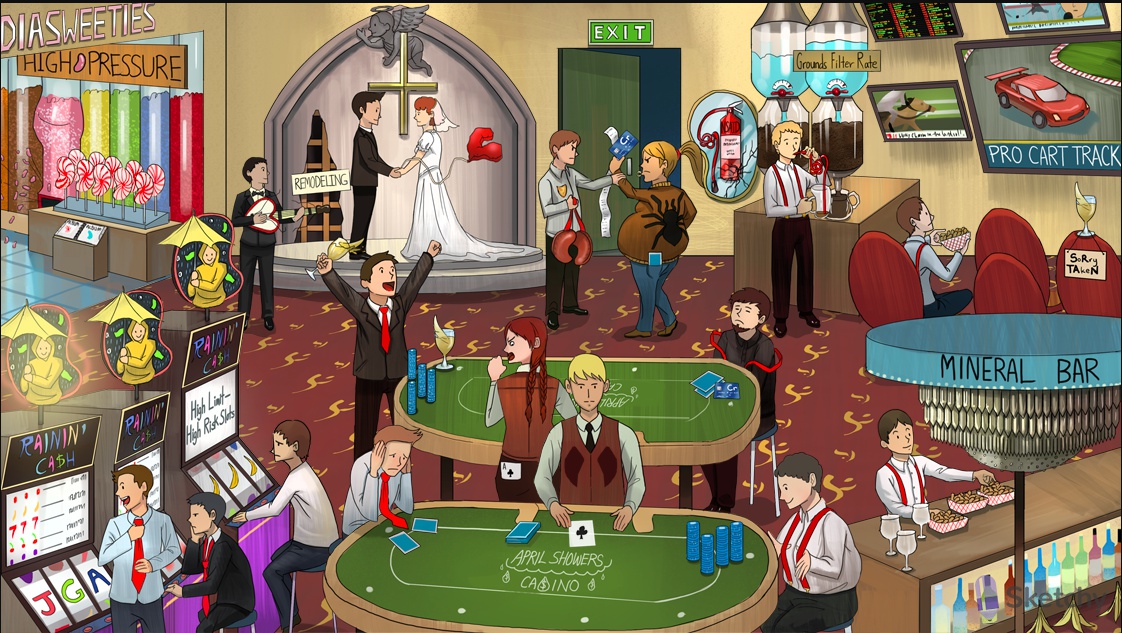
- ACE I: high potassium cup

- Depleted mineral mine: NSAIDs can cause hypoaldosteronism (decreased mineralocorticoids)
- Big K: NSAID induced hypoaldosteronism can cause hyperkalemia. Type 4 RTA

- Mad scientist with 4 tubes of acid: Type IV renal tubular acidosis (RTA)
- K shape: Type IV RTA leads to hyperkalemia
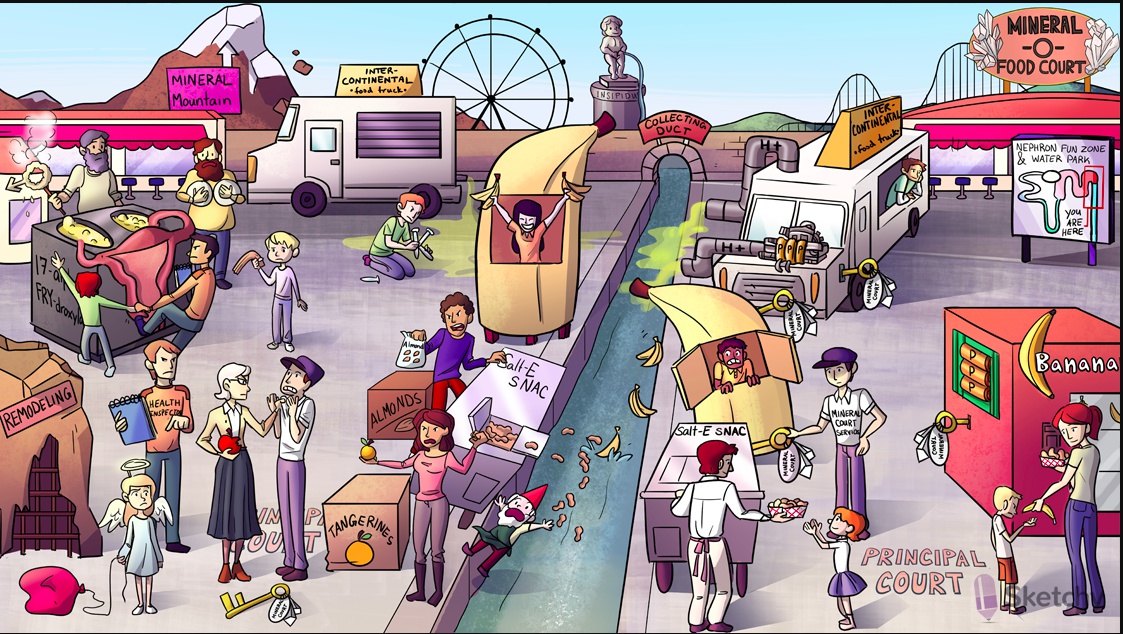
- Elevated bananas: K+ sparing diuretics can cause hyperkalemia
- Acid spill into intracellular space: K+ sparing diuretics cause a normal anion gap metabolic acidosis (by decreasing the function of the H+ATPase)
- 4 acid tubes: K+ sparing diuretics inhibit the effects of aldosterone in the collecting duct causing a type 4 renal tubular acidosis (RTA)
- Big K: type 4 RTA is associated with hyperkalemia

- Depleted mineral mine: heparin can cause hypoaldosteronism (a mineralocorticoid)
- Big K: heparin induced hypoaldosteronism (Type 4 RTA) causes hyperkalemia
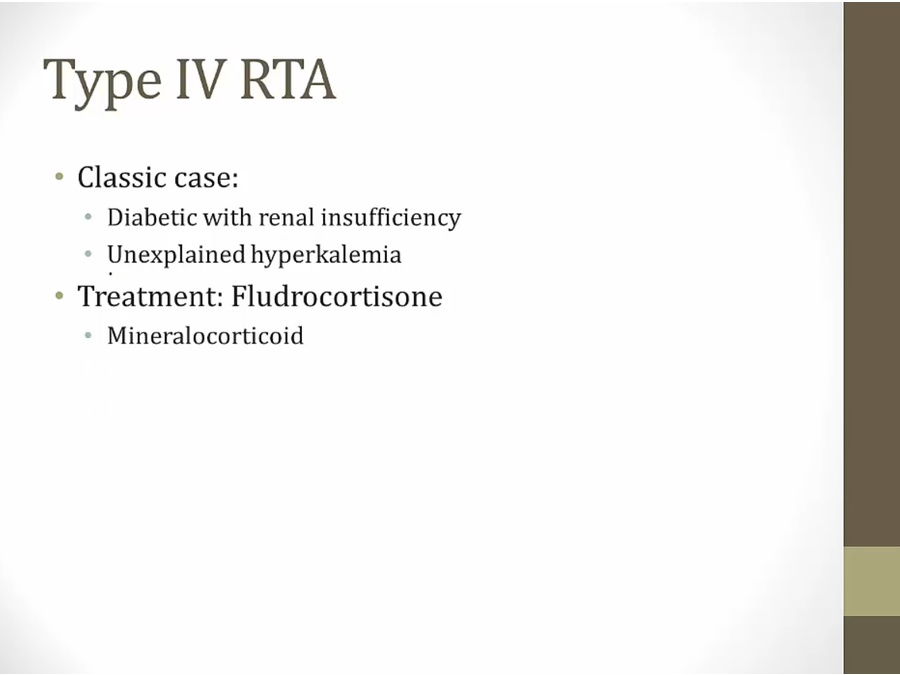
- fludrocortisone: synthetic aldosterone
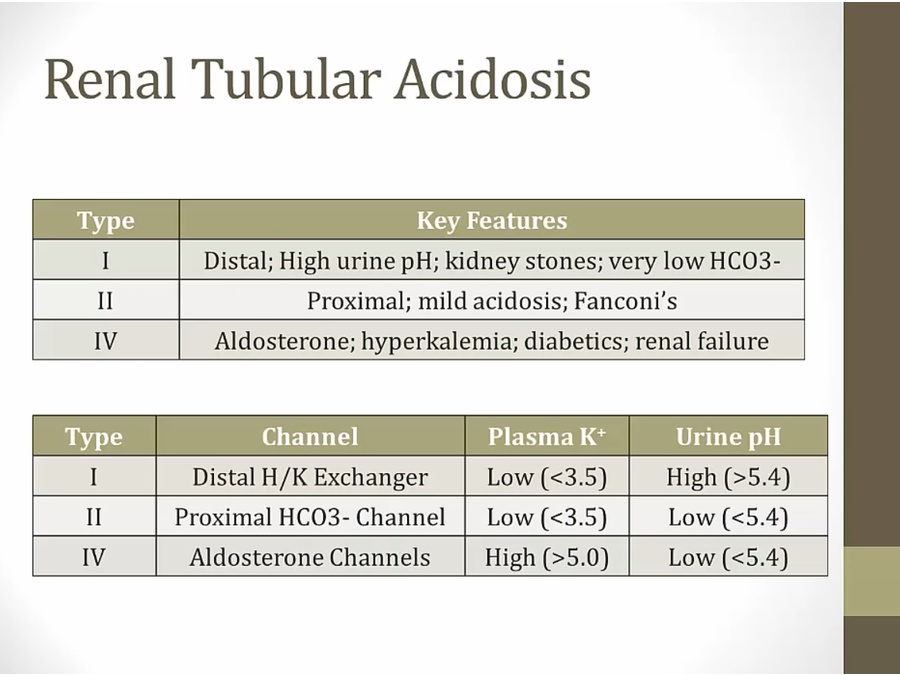
Links to this note
-
hyponatremia associated with medication and RTA
- All of the medications listed are associated with the development of hyponatremia. Unfractionated heparin is a known inhibitor of aldosterone production by the zona glomerulosa of the adrenal glands. Heparin has been associated with the development of both hyponatremia and hyperkalemia, most commonly seen within 1 to 3 days of initiation. Of note, the patient has also developed nonanion gap acidosis, which should raise suspicion for a renal tubular acidosis (11 RTA) that can be seen in the setting of aldosterone deficiency.